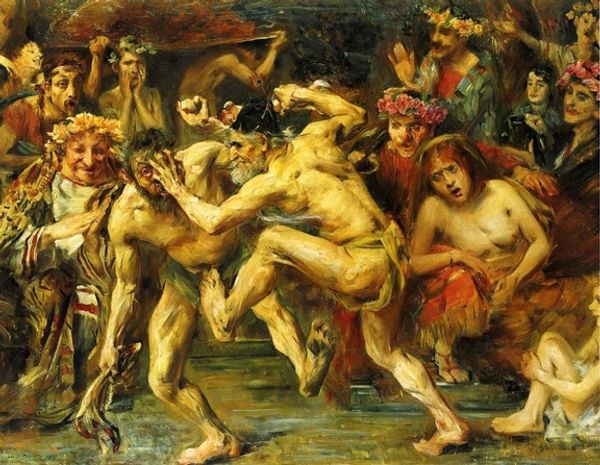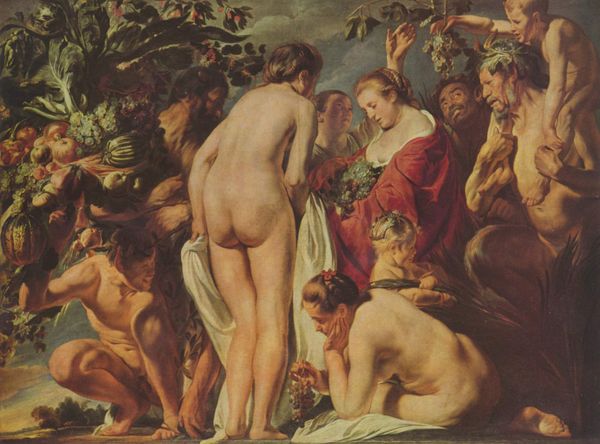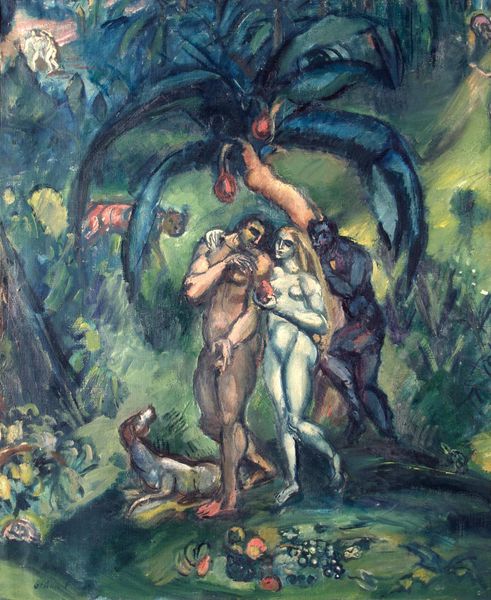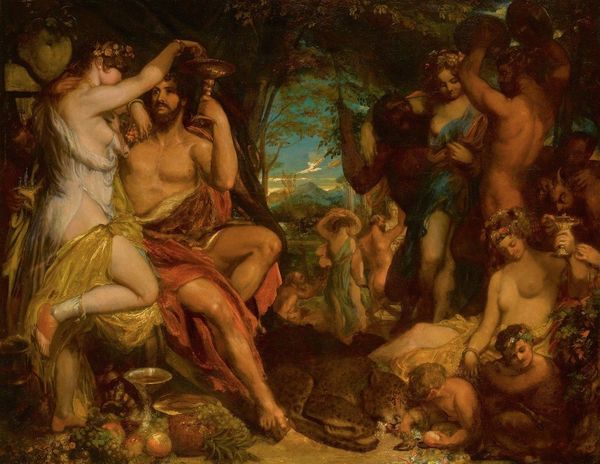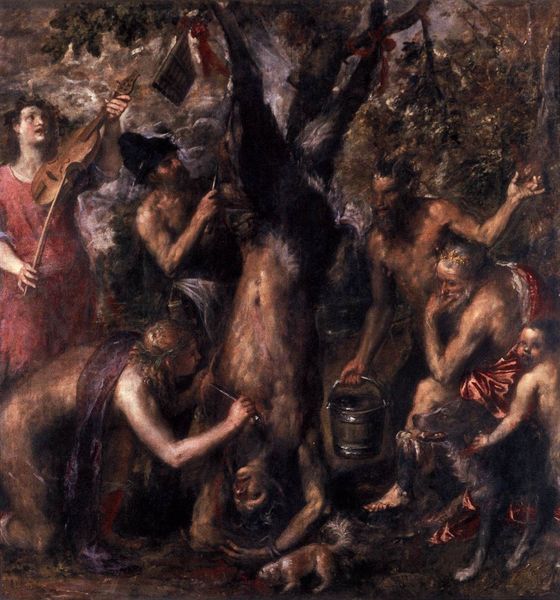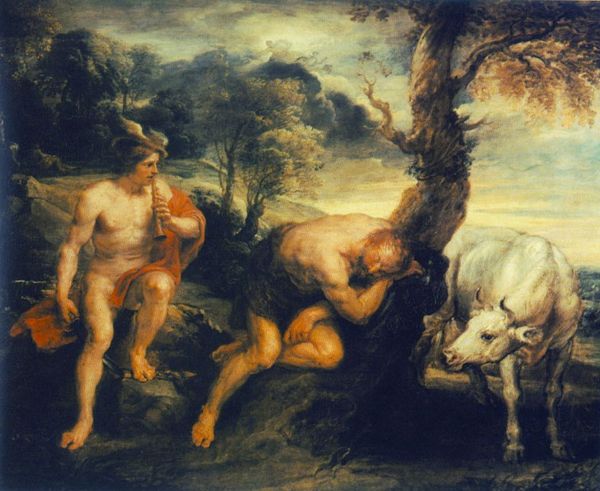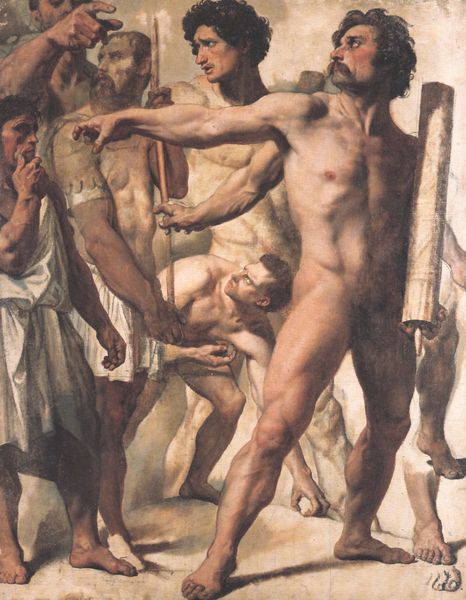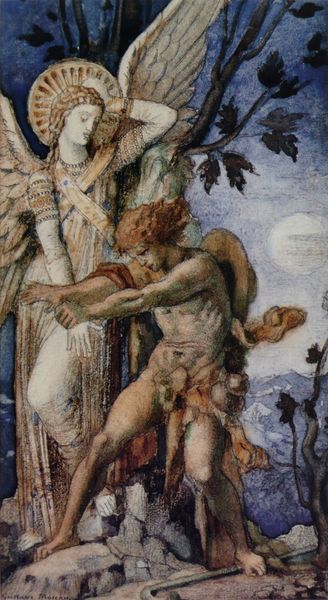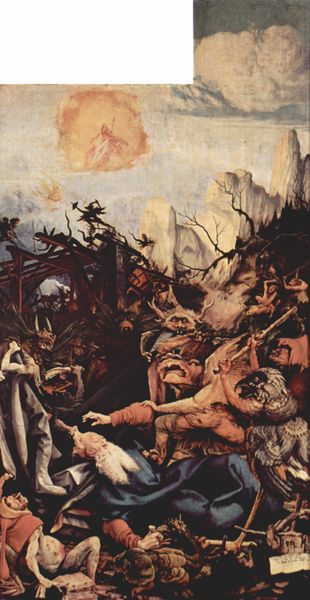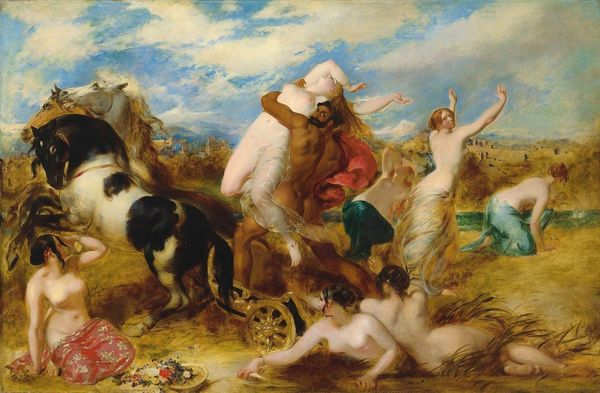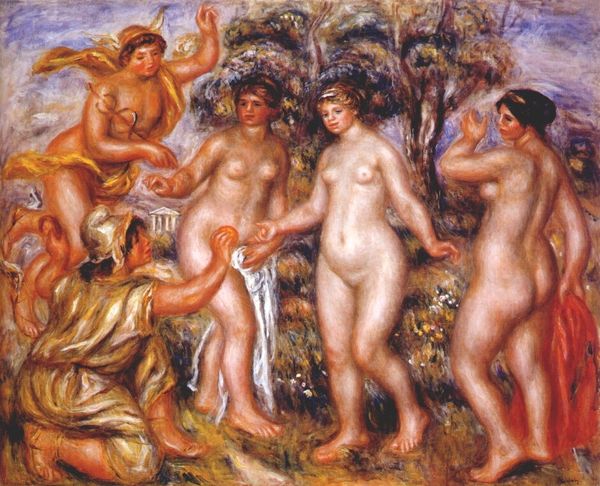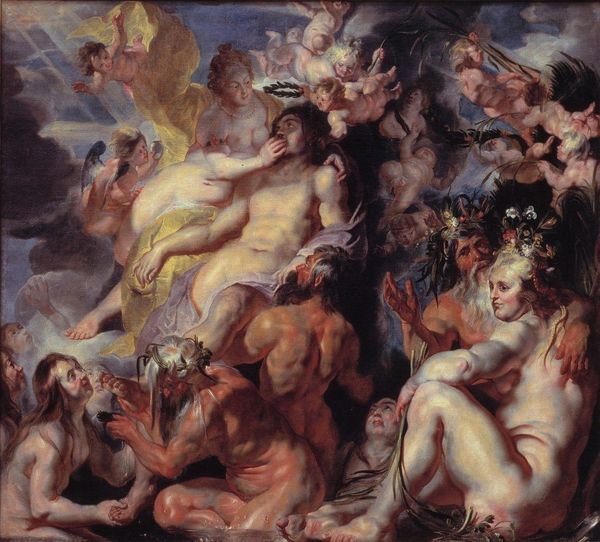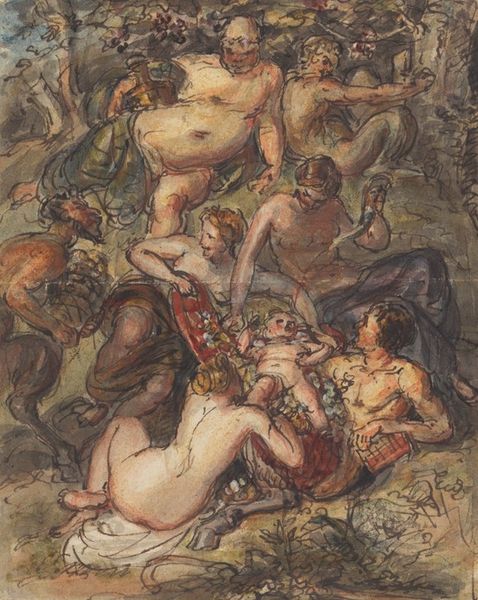
oil-paint
#
oil-paint
#
landscape
#
figuration
#
oil painting
#
neo expressionist
#
expressionism
#
mythology
#
history-painting
#
nude
#
expressionist
Copyright: Public domain
Editor: So here we have Lovis Corinth’s “The Youth of Zeus” from 1905, rendered in oil paint. The composition is quite…chaotic. Lots of figures and action. The faces are so expressive, or maybe exaggerated. What strikes you about this piece? Curator: Considering Corinth's choice of oil paint, we can really see his engagement with the very substance of his art. Look at how the thickness and application become not just representational but also expressive. It mirrors the social context of early 20th-century Germany, where traditional artistic production was being challenged by industrial methods. Notice the visible brushstrokes; they emphasize the artist’s hand, asserting labor in a world increasingly dominated by mechanical reproduction. How do you see this materiality connecting to the theme of youthful Zeus? Editor: Well, maybe the raw energy of the brushstrokes, that forceful application, echoes the untamed, nascent power of a young god? Is that a fair connection to make? Curator: It’s a valuable observation. The unblended pigments reflect the vibrant but perhaps also uncontrolled potential of Zeus. Think about the historical moment: Corinth painted this during a time of great social upheaval and reevaluation of established norms. How does this work challenge or subvert traditional academic painting, particularly in its portrayal of mythology? Editor: It feels almost anti-classical in its roughness. The mythology seems almost like a justification to paint these... fleshly bodies and wild emotions, less idealized, maybe? Curator: Precisely. And notice how that subversion questions the relationship between high art and what some might consider base craft, the sheer physical act of applying paint. This challenges the traditional boundaries, implying value in the labor itself. Editor: I see that now – it’s like the act of painting, the struggle with the materials, becomes part of the story. It is far away from, say, a perfectly rendered Ingres. Thanks, I will remember to examine material application as social context, too. Curator: Indeed. The dialogue between material, process, and subject offers fresh insights into art.
Comments
No comments
Be the first to comment and join the conversation on the ultimate creative platform.
